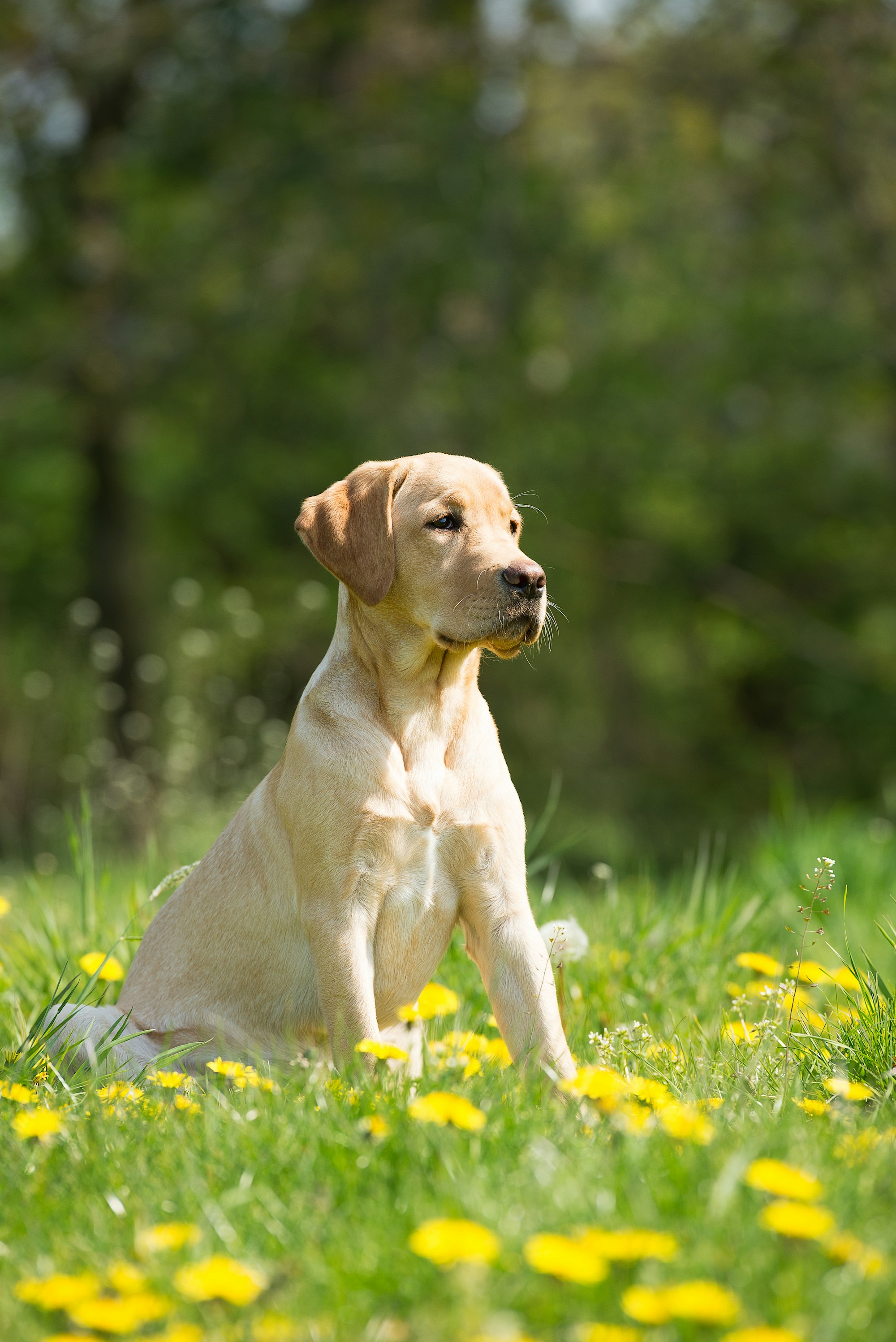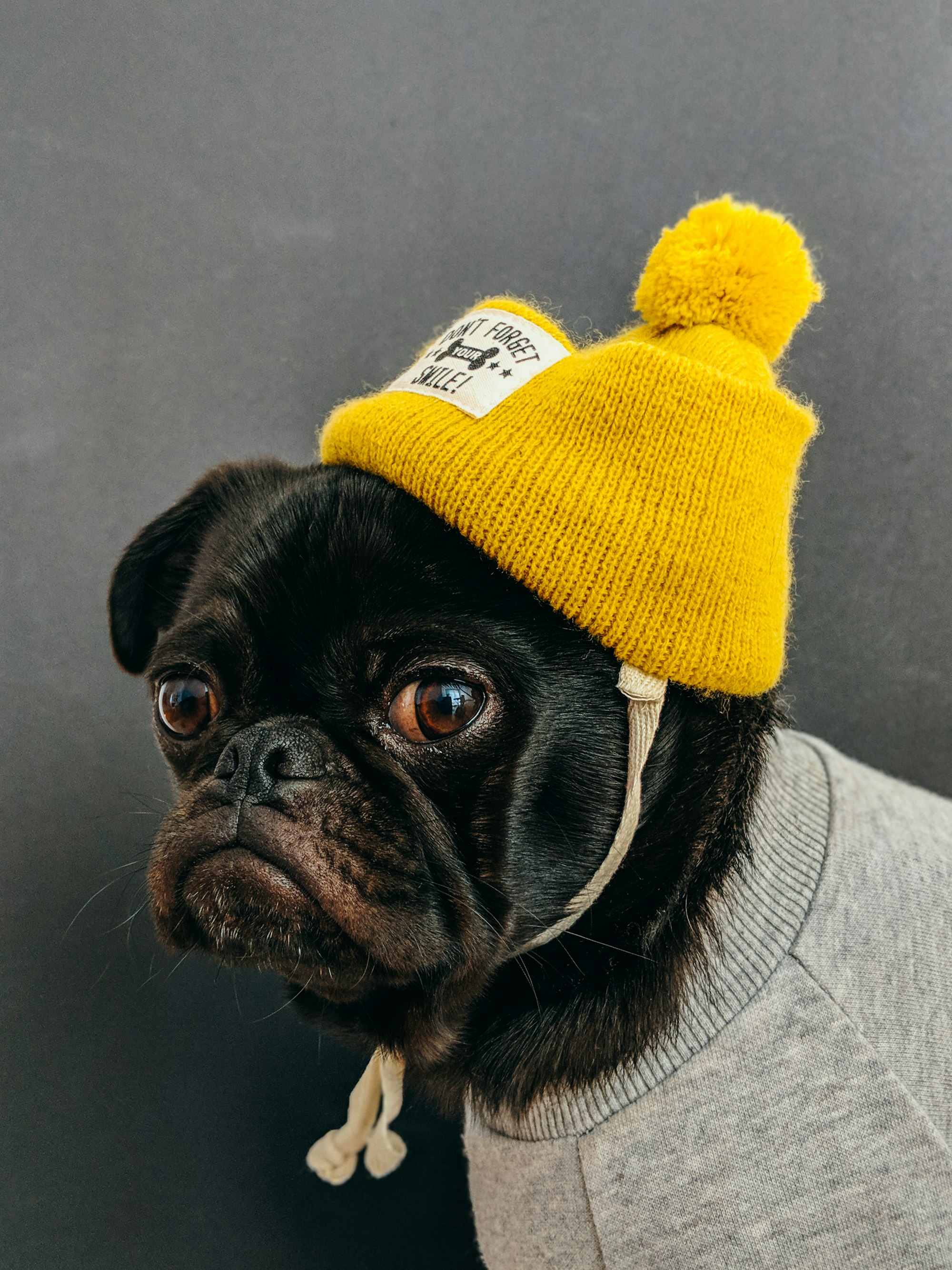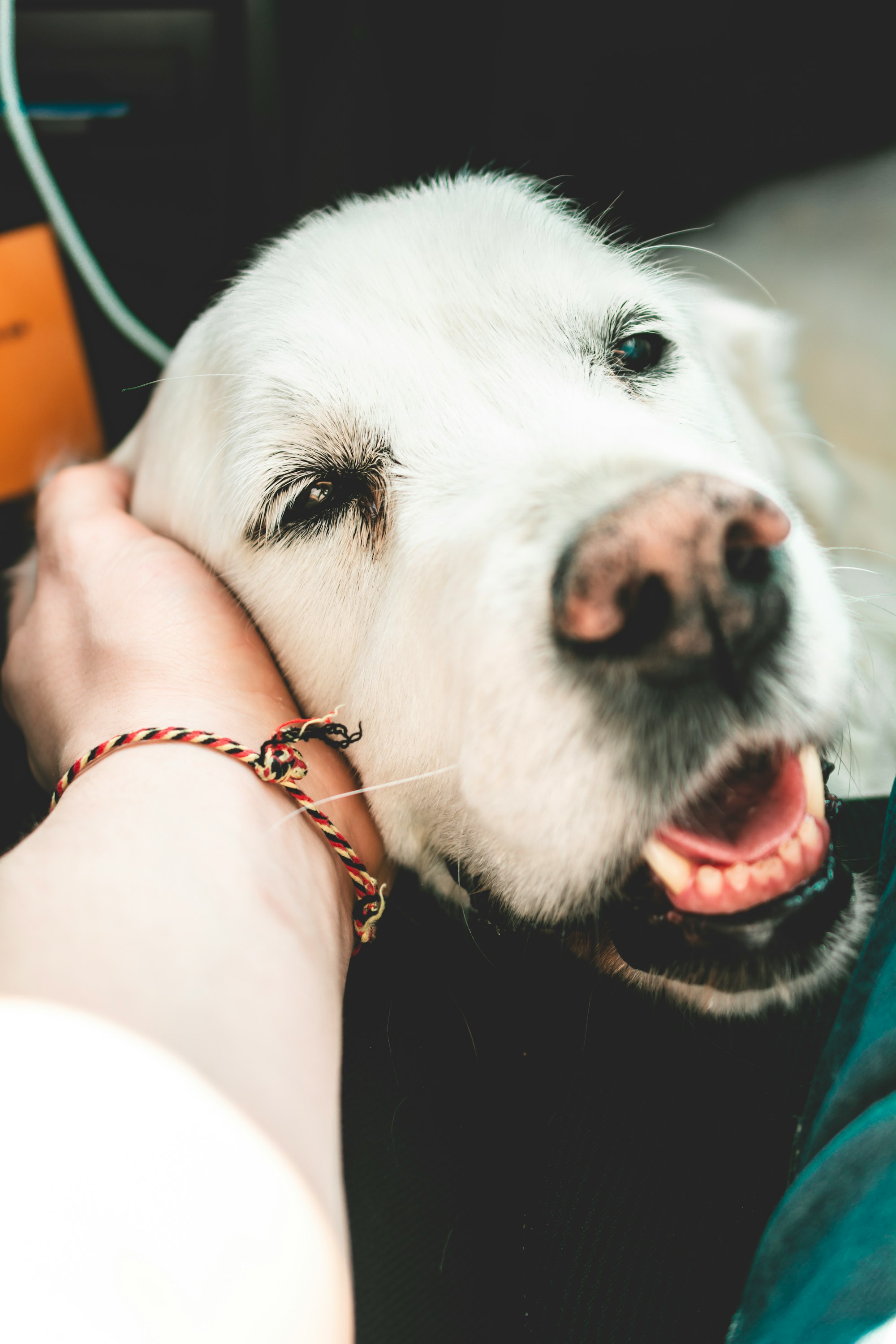Dog jowls, those droopy folds of skin that hang down from a dog's face, are visually striking and serve important functions for our canine companions. Dog jowls add elegance and character to our furry friends like the majestic lion's mane or the graceful swan's neck.
Picture a proud German Shepherd with its regal head held high, pronounced jowls gently swaying in the breeze as it confidently strides forward. These distinctive features have fascinated and captivated humans for centuries, making them an intriguing exploration subject.
In this article, we will delve into the world of dog jowls to uncover their purpose and significance. We will examine why dogs have jowls in the first place and explore which breeds are most known for these endearing facial adornments. Additionally, we will discuss common problems associated with dog jowls and provide practical tips on how to clean them properly.
By understanding dog jowls comprehensively, you will be equipped with valuable knowledge to better care for your four-legged companion and deepen your appreciation for their unique anatomical features. So let us embark on this journey together to unravel the mysteries behind these fascinating appendages that grace our beloved canines' faces.
What Are Dog Jowls?

Dog jowls, which are loose skin that hangs down from a dog's lower jaw, serve as a functional and anatomical feature that aids in cooling the body through evaporative heat loss. This unique characteristic is found in various dog breeds, especially those with large or droopy jowls. Dogs with big jowls add to the aesthetic appeal of certain breeds and play a crucial role in their overall well-being.
The size and shape of a dog's jowls can vary depending on the breed. For instance, breeds like Bloodhounds and Saint Bernards are known for their large and saggy jowls. These prominent features give these dogs a distinctive appearance that many find endearing. However, it goes beyond mere aesthetics.
The loose skin in their jowls serves a practical purpose by aiding in thermoregulation. When dogs pant, moisture from their breath evaporates off the surface of the moist tissues within their mouths and throats, helping to dissipate heat from their bodies. The extra surface area provided by large jowls allows for increased evaporation, thus facilitating more effective cooling during hot weather or intense physical activity.
Dog breeds with prominent jowls possess an anatomical advantage beyond visual appeal. Their large and droopy jowls aid in evaporative heat loss through panting, enabling them to regulate body temperature more efficiently. By understanding this aspect of canine anatomy, we gain insight into the functional significance and diverse beauty of different dog breeds' characteristics. This knowledge also highlights dogs' remarkable adaptability and ability to thrive in various climates and environments.
Why Do Dogs Have Jowls?
1. Makes Eating Easier
Canine jowls facilitate food consumption by providing a functional mechanism for efficient chewing and swallowing. Jowls are characterized by loose skin that hangs down from the lower jaw, often giving certain dog breeds a distinct appearance. This loose skin gives dogs greater flexibility and range of motion in their mouths, enabling them to manipulate their food more effectively.
The presence of jowls also helps to prevent excessive drooling during eating, as the loose skin can catch any excess saliva and prevent it from dripping onto the floor or their bodies. This feature becomes even more pronounced for dog breeds with droopy jowls, such as Basset Hounds or Bloodhounds.
Their elongated faces and sagging cheeks create ample space within their mouths for storing larger amounts of food while chewing. This makes eating easier for these breeds as they can take bigger bites and chew more efficiently without risking choking or discomfort. Jowls in dogs serve a functional purpose when it comes to eating.
The loose skin and droopy jowls allow greater flexibility in manipulating food, prevent excessive dog drool, and make chewing and swallowing easier for certain dog breeds. Understanding the importance of canine jowls provides insight into their physical characteristics and enhances our appreciation for the unique adaptations that enable dogs to consume their meals easily.
2. Helps Retain Moisture
Loose skin and sagging cheeks in certain dog breeds create a natural reservoir that helps retain moisture while eating, ensuring that food remains moist and easy to chew.
This unique feature is particularly beneficial for dogs with large jowls, such as Saint Bernards or Bloodhounds. The excess skin around their mouths forms droopy jowls that create a pocket-like area when they eat.
As these dogs consume their food, any liquid or saliva produced mixes with the kibble or wet food, keeping it moist and preventing it from drying out. This makes eating easier for these breeds and enhances their meals' overall taste and texture.
However, while dog jowls offer advantages in retaining moisture during feeding, there are potential downsides associated with this characteristic as well.
Dogs with loose skin around their mouths may be prone to lip fold dermatitis, a condition characterized by inflammation and infection of the folds between the lips and cheeks. The accumulation of moisture within these creases can create an ideal environment for bacteria or yeast to thrive, leading to redness, swelling, discomfort, and sometimes even a foul odor.
Therefore, regular cleaning of dog jowls is crucial to prevent such issues. Pet owners should gently wipe the areas around their dog's mouth after meals using a damp cloth or specialized pet wipes recommended by veterinarians.
By maintaining proper hygiene practices and monitoring any signs of excessive drooling or irritation in the jowl area, pet owners can help ensure that their furry companions reap all the benefits without experiencing any negative consequences of having loose skin around their mouths.
3. Offers Protection

One advantage of the loose skin and sagging cheeks in certain breeds is their protective function. Dog jowls, as defined by their loose skin and pronounced sagging, are important in safeguarding a dog's face from potential injuries.
These jowls protect vital structures such as the eyes and mouth, shielding them from external elements that dogs may cause harm to.
Jowls may act as a barrier against various hazards that dogs encounter daily. For instance, when a dog is running through dense vegetation or undergrowth, the loose skin of their jowls helps to minimize the impact of branches and thorns that could otherwise scratch or jab at their delicate facial features.
During playtime or interactions with other animals, jowls can absorb some forceful impacts that may occur accidentally. This can prevent direct trauma to sensitive areas like the eyes or nose, reducing the risk of injury.
4. Keeps Water Out
Another beneficial function of the loose skin and sagging cheeks in certain dog breeds is their ability to keep water out, which is crucial in protecting the dog's face from potential moisture-related issues.
The loose jowls and skin around the face create a barrier that prevents water from entering sensitive areas such as the eyes, nose, and mouth.
This feature is particularly useful for water dogs or breeds with jowls frequently exposed to wet environments.
Protection from moisture:
The loose skin and floppy jowls are a natural shield against water, preventing it from seeping into the dog's facial crevices. This helps to keep the sensitive areas dry and less prone to irritation or infection caused by prolonged exposure to moisture.
Prevention of jowl infection:
Dogs with droopy jowls are more susceptible to developing jowl infections due to trapped moisture and bacteria. However, the loose skin around their faces aids in keeping these areas dry, reducing the risk of bacterial growth and subsequent infections.
Maintaining overall facial health:
By acting as a barrier against water, dog jowls contribute to maintaining the overall health of their face. Wet conditions can lead to discomfort, inflammation, and various dermatological issues in dogs. The presence of loose jowls allows for better protection against these problems.
Aside from offering protection, one important function of dog jowls is their ability to keep water out. The loose skin and sagging cheeks serve as a defense mechanism against potentially harmful effects caused by prolonged exposure to moisture.
Dogs with floppy or droopy jowls benefit greatly from this feature as it helps maintain their facial health by preventing moisture-related issues such as irritation or infection.
5. Assists With Scent and Tracking
Assisting with scent and tracking, certain dog breeds' sagging cheeks and loose skin serve as a valuable tools for locating objects or individuals.
These prominent jowls, commonly seen in hunting dogs such as Bloodhounds or Basset Hounds, enhance their olfactory abilities by trapping scents close to the nose. The loose skin around their muzzles allows for better air circulation, which aids in capturing odors more effectively. The excess drool accompanying these jowls further assists in scent detection by carrying odor particles from the air to the dog's sensitive nasal passages.
These dogs' loose skin and droopy jowls also play a crucial role in tracking tasks. When a hunting dog follows a scent trail, its muzzle will be low to the ground with its jowls hanging down. This positioning helps to collect and concentrate scent molecules that have fallen to the ground, making it easier for the dog to distinguish different smells and track specific scents over long distances.
The loose skin around their faces allows them to move their noses freely without restriction, ensuring they can thoroughly investigate scents along their paths. These specialized features enable hunting dogs with prominent jowls and loose skin to excel at tasks requiring scent detection and tracking skills.

Which Breeds have Jowls??
Several breeds of dogs, such as Bloodhounds, Basset Hounds, and Saint Bernards, are known for their prominent jowls that hang down from their faces. These breeds have loose skin around their mouths, resulting in big, floppy jowls.
The loose skin serves a practical purpose for these dogs. As they track scents or search for prey, the loose skin helps to trap odors and keep them close to their sensitive noses. This feature enhances their ability to track scents over long distances and makes them excellent hunters or search and rescue dogs.
In addition to aiding in scent tracking, the large jowls on these breeds also play a role in drooling. Due to the loose skin around their mouths, these dogs produce significant amounts of saliva that often collects in their jowls. While some dog owners may see this as messy, it has functional benefits for the dog itself.
The excess drool helps to keep the dog's mouth moistened and can aid in cooling them down during hot weather. Furthermore, when these breeds eat or drink water, the extra space provided by their floppy jowls allows them to hold more without spilling it all over themselves.
Several breeds of dogs possess distinct characteristics like big and floppy jowls due to loose skin around their mouths. These features contribute to their unique appearance and serve important scent tracking and drooling functions.
Understanding which dog breed has large jowls can help enthusiasts appreciate the diversity among canine companions while understanding how certain physical traits fulfill specific purposes in a dog's life.
What are the Common Problems With Dog Jowls?
Jowls in dogs are a fascinating and unique feature that can vary greatly among different breeds. In the previous subtopic, we discussed which breeds have jowls, highlighting how certain breeds like Bloodhounds and Basset Hounds are known for their prominent and floppy jowls. Now, let's delve into the common problems associated with dog jowls.
One of the most noticeable issues with floppy and droopy jowls is excessive drooling. Dogs with loose and droopy jowls tend to drool more than those without this characteristic. While some drooling is normal for dogs, excessive drooling can cause concern. It may indicate an underlying health problem such as dental issues or oral infections.
The constant moisture around the mouth caused by excessive drooling can lead to skin irritation or even fungal infections if not properly addressed. Therefore, it is important for dog owners to regularly check their pet's jowls for any signs of discomfort or abnormality.
Apart from excessive drooling, another potential problem associated with dog jowls is the increased risk of injuries. Jowls protect a dog's face during hunting or playing rough with other animals. However, due to their loose nature, they are also prone to getting caught on objects or accidentally bitten during playtime. This can result in cuts or abrasions that may cause the jowls to bleed. Dog owners must be mindful of their pet's surroundings and take necessary precautions to prevent such injuries.
While floppy and droopy jowls add character to certain dog breeds, they also come with challenges. Excessive drooling can indicate underlying health issues that require attention, while loose jowls increase the risk of injuries that may lead to bleeding. Owners can ensure the well-being and comfort of their furry companions by being vigilant about these potential problems and providing proper care and maintenance for their dog's jowls.
How do you clean a dog's jowls?
Proper hygiene for a dog's facial area ensures its overall health and comfort. When it comes to cleaning a dog's jowls, there are several important steps to follow:
1. Start gently wiping the dog's jowls with a soft, damp cloth or baby wipe. This will help remove any drool or food residue accumulated on the surface.
2. If your dog has swollen jowls or any signs of infection, it is important to consult a veterinarian before cleaning them yourself. Swollen jowls can be a sign of oral papillomavirus or other underlying health issues that require professional treatment.
3. Avoid using harsh chemicals or soaps when cleaning your dog's jowls, which can irritate their sensitive skin. Stick to mild, pet-safe cleansers or natural remedies recommended by your vet.
4. Regularly check your dog's jowls for any signs of bleeding or open wounds. Floppy jowls can sometimes get caught on objects and cause injuries that need immediate attention from a vet.
Following these steps and maintaining regular cleanliness can help keep your furry friend's jowls clean and healthy, promoting their overall well-being and preventing potential complications.
Frequently Asked Questions
How can I prevent my dog's jowls from drooping?
To prevent drooping jowls in dogs, it is important to maintain a healthy weight through proper diet and exercise. Regular dental care can also help prevent oral health issues contributing to jowl sagging.
Do all dog breeds have noticeable jowls?
Not all dog breeds have noticeable jowls. The visibility of jowls varies among different breeds, with some having more prominent and droopy jowls while others have less pronounced or even nonexistent ones.
Can dog jowls cause any health issues?
Dog jowls can cause health issues such as skin infections, dental problems, and drooling. Dog owners must regularly clean and inspect their pet's jowls to prevent these complications and ensure their overall well-being.
Are there any specific grooming techniques for cleaning dog jowls?
Specific grooming techniques for cleaning dog jowls include regular wiping with a damp cloth, using specialized pet wipes or gentle cleansers, and ensuring proper drying. These practices help maintain hygiene and prevent health issues associated with dirty jowls.
Can dog jowls affect a dog's ability to eat or drink?
Dog jowls can indeed affect a dog's ability to eat or drink. The excess skin and drooping of the jowls may impede their access to food or water, resulting in difficulties in consuming these essential resources for sustenance.
Final Thoughts
To sum it all up, jowls, defined as the loose skin around a dog's mouth or on the jowls, are an integral part of various breeds of dogs. Breeds with large jowls and dogs with big jowls are known for their floppy and droopy jowls which may seem unpredictable in movement but offer distinct benefits.
Notably, prominent jowls offer protection, acting as a shield that makes it harder for another dog to grab, especially for breeds known as fighting dogs. Dog owners must know that jowls can still perform their functions even when drooping.
Dogs with large, long, or loose jowls tend to drool, yet these jowls also trap air, facilitating a unique cooling mechanism as the dog moves. However, regardless of the type or family of dog breeds, every dog may be prone to issues like jowl infection or bleeding jowls, hence the need to regularly clean your dog’s jowls and keep your dog's jowls dry.
As such, cleaning dog jowls and regularly checking for changes in your dog's jowls are important steps for dog owners. Noticing any change, especially if your dog is drooling excessively or the skin around the jowls seems infected, is essential. While jowls are loose, they're also susceptible to damage that can cause jowls to bleed. Hence, proper care should be taken when the dog's jowls are cleaned to ensure they stay healthy and their functions are not compromised.
Every dog, whether breeds with jowls or not, requires attention to the mouth area. But dogs with big droopy jowls need more frequent maintenance, given their larger surface area. However, the effort you put into caring for your dog's jowls is well rewarded by the companionship of breeds known for their floppy jowls and friendly nature.
Hence, while it may take time for a dog to get used to having its jowls cleaned, it will eventually get used to it. This, in essence, is everything you need to know about dog jowls, a feature that's not only aesthetically distinctive but also significantly contributes to the overall well-being and unique characteristics of certain dog breeds.